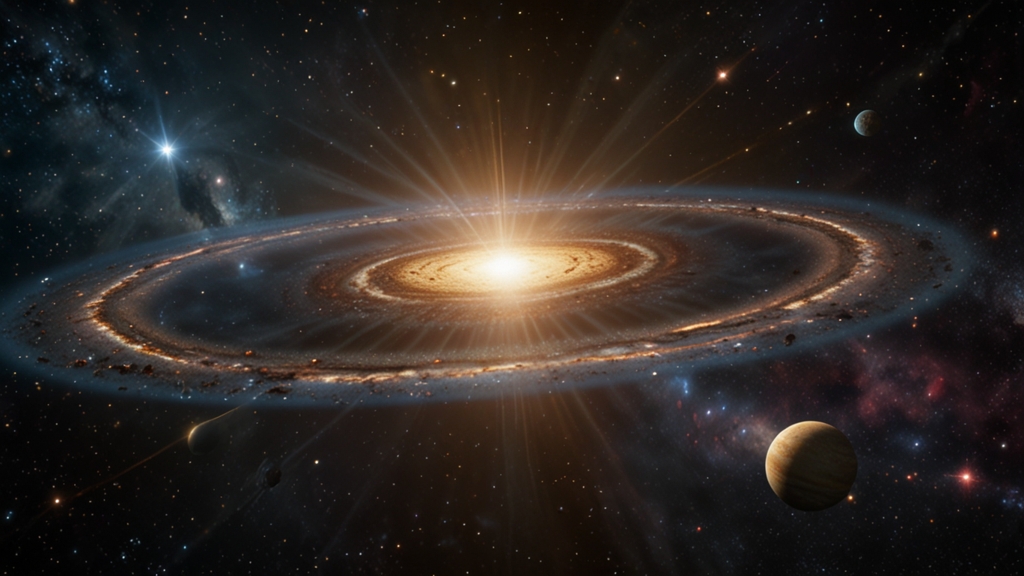Galactic Time Capsules: What Ancient Star Light Reveals About Our Past
The cosmos is filled with myriad wonders, and one of its most captivating phenomena is the ancient starlight that reaches us from distant galaxies. This light serves as a galactic time capsule, offering glimpses into the universe's distant past and unveiling secrets that can enrich our understanding of both cosmic evolution and our own origins.
The Journey of Light Through Space and Time
When we gaze up at the night sky, we are not just looking at stars as they are now, but rather as they were when their light began its journey toward Earth. Given the enormity of interstellar distances, this journey can span thousands, millions, or even billions of years. For instance, light from the Andromeda Galaxy—the closest spiral galaxy to our Milky Way—takes approximately 2.5 million years to reach us.
"Every time we observe the night sky, we are peering back in time, witnessing stellar life processes and cosmic events that happened eons ago."
This concept forms the basis of observational astronomy and allows scientists to piece together the history and evolution of the universe. By studying ancient starlight, astronomers can reconstruct stellar birth and death, galaxy formation, and even the changing dynamics of cosmic expansion.
Unlocking Ancient Secrets
One of the most intriguing aspects of starlight is that it can carry imprints from early epochs of the universe. The light from distant stars and galaxies contains a wealth of information encoded in its spectrum. Each spectral line corresponds to specific elements and conditions at the time the light was emitted, acting as a fingerprint of cosmic history.
For example, the study of high-redshift galaxies—those that are seen as they were shortly after the Big Bang—has provided evidence for the existence of the first generation of stars, known as Population III stars. These primordial stars are thought to have formed from the pristine gas composed mainly of hydrogen and helium, created during the Big Bang nucleosynthesis.
"By analyzing the ancient light from distant galaxies, scientists can discover signs of the earliest star formations, shedding light on the conditions that prevailed in the nascent universe."
Cosmic Clues to Our Origins
The history recorded in ancient starlight also serves to contextualize our own existence. Elements essential for life, such as carbon, oxygen, and iron, are forged within the cores of stars through nuclear fusion. These elements are later dispersed into space by supernova explosions, enriching subsequent generations of stars and planetary systems. In this way, ancient starlight bridges the gap between cosmology and biology, illustrating the interconnectedness of cosmic events and life on Earth.
In addition to stellar history, studying the cosmic microwave background (CMB)—the residual thermal radiation from the Big Bang—has enabled scientists to gain insights into the initial conditions and large-scale structure of the universe. The CMB acts as a backdrop to the cosmic theatre, illuminating the tapestry against which galaxies, stars, and planets evolve.
The Future of Time Travel Through Light
As technology advances, our ability to dissect and interpret ancient starlight continues to improve. Upcoming telescopes like the James Webb Space Telescope (JWST) promise to extend our visual reach even deeper into the past, revealing more about the first stars and galaxies, as well as the mysterious dark matter and dark energy shaping the universe.
The study of ancient starlight is more than a scientific endeavor; it is a profound quest to discover our place in the cosmos. Each photon of light that reaches our telescopes is a messenger from history, offering a story about the universe that is both grand and humbling. By continuing to decode these galactic time capsules, we not only enrich our scientific knowledge but also deepen our understanding of the fundamental nature of reality itself.








